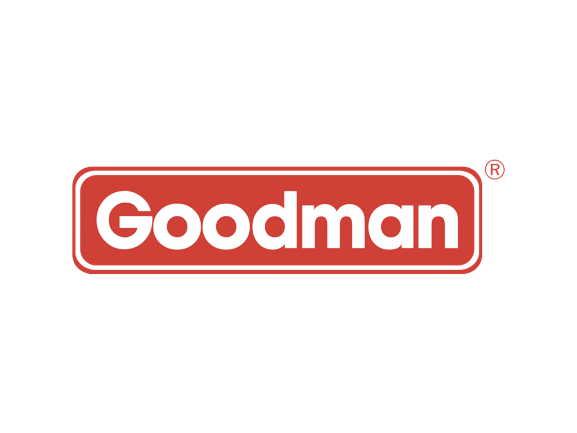Hot Water Tank
Hot Water Tank Installation, Maintenance, Repair & Services
Experience unmatched comfort with our specialized hot water tank installation, repair, and services. Our team of experienced experts is dedicated to ensuring your hot water needs are met efficiently and reliably. Whether you seek seamless hot water tank installation or swift repairs to restore your hot water supply, BCRC delivers excellence. With a commitment to customer satisfaction and a track record of expertise, BCRC stands ready to elevate your hot water experience.
Table of Contents

Customer-Centric Approach
At BCRC, your satisfaction is our priority. We take the time to understand your hot water needs, offering personalized solutions backed by exceptional customer service.
Local Expertise
As a Vancouver-based company, BCRC understands the unique demands of the local climate, ensuring your hot water tank is suited for optimal performance in this region.
Maintenance Services
Our routine maintenance services keep your hot water tank in optimal condition, extending its lifespan and reducing the chances of unexpected breakdowns.
Quick and Responsive Repairs
In case of any issues, our responsive team is equipped to provide swift and effective hot water tank repairs, minimizing downtime.
Reliable Performance
BCRC's hot water tanks are sourced from trusted manufacturers, guaranteeing reliable and uninterrupted hot water supply for your home or business.
Energy Efficiency
Our hot water tanks are designed to be energy-efficient, helping you save on utility bills while maintaining consistent hot water supply.
Customized Solutions
We tailor hot water tank options to your specific requirements, ensuring you get the right capacity and type for your needs.
Expert Installation
BCRC's skilled technicians ensure the flawless installation of your hot water tank, optimizing performance and efficiency.
Welcome to BCRC, your trusted partner for comprehensive HVAC solutions in Vancouver. Elevate your home’s comfort and convenience with our specialized hot water tank installation, repair, and services. Our team of experienced experts is dedicated to ensuring your hot water needs are met efficiently and reliably. Whether you’re looking for a seamless hot water tank installation, swift repairs to restore your hot water supply, or comprehensive maintenance to extend its lifespan, BCRC has you covered.
With a commitment to customer satisfaction and a track record of excellence, BCRC stands as your go-to choice for transforming your hot water experience. Explore the efficiency, expertise, and excellence of our hot water tank services today. At BCRC, we understand the essential role a reliable hot water tank plays in your daily comfort. Our seasoned professionals excel in providing top-tier hot water tank installation, repair, and services that optimize your hot water supply.
As industry leaders, we bring years of expertise to every project, ensuring a seamless installation process, prompt repairs to keep your hot water flowing, and tailored maintenance plans to enhance its longevity. With a focus on quality, efficiency, and customer satisfaction, BCRC is your partner in achieving uninterrupted hot water comfort. Experience the difference our experienced experts can make for your home’s hot water tank needs. Trust BCRC for comprehensive hot water tank solutions that redefine comfort and reliability.
BCRC's Hot Water Tank Benefits
604 781 7272
Hot Water Tank Differences
There are several types of hot water tanks available, each designed to cater to different needs and preferences. Here are the main types of hot water tanks:
5. Indirect Water Heater: An indirect water heater uses the heat from a boiler or furnace to heat the water. It doesn’t have its own heat source but relies on the primary heating system.
6. Point-of-Use Water Heater: These small units are installed near the point of use, such as under sinks or in bathrooms. They provide instant hot water to a specific fixture, eliminating the need to wait for hot water to reach the tap.
7. Tankless Coil Water Heater: This type of water heater is connected to a home’s heating system. It uses the heat from the furnace or boiler to heat the water as it flows through a coil within the unit.
8. Storage Tank Water Heater: Similar to conventional tank water heaters, these units have a smaller storage tank and are often used in small spaces or for point-of-use applications.
- Conventional Tank Water Heater: This is the most common type of hot water tank. It features a large storage tank that heats and stores water continuously. When hot water is used, cold water enters the tank to be heated and stored again. They come in various sizes to accommodate different household needs.
- Tankless Water Heater: Also known as on-demand water heaters, these units heat water directly as it flows through the unit without the need for a storage tank. They provide hot water on demand, making them energy-efficient and space-saving options.
- Heat Pump Water Heater: These units extract heat from the air or ground and use it to heat the water. They are more energy-efficient than conventional tank water heaters but may require a larger installation space and a suitable location for heat exchange.
- Solar Water Heater: Solar water heaters use energy from the sun to heat water. They consist of solar panels (collectors) that absorb sunlight and transfer the heat to the water. These systems can be coupled with a conventional hot water tank for backup during periods of low sunlight.
When selecting a hot water tank, consider factors such as your hot water needs, available space, energy efficiency, fuel source, and budget. Each type of hot water tank has its own advantages and disadvantages, so it’s important to choose the one that aligns with your requirements and preferences.
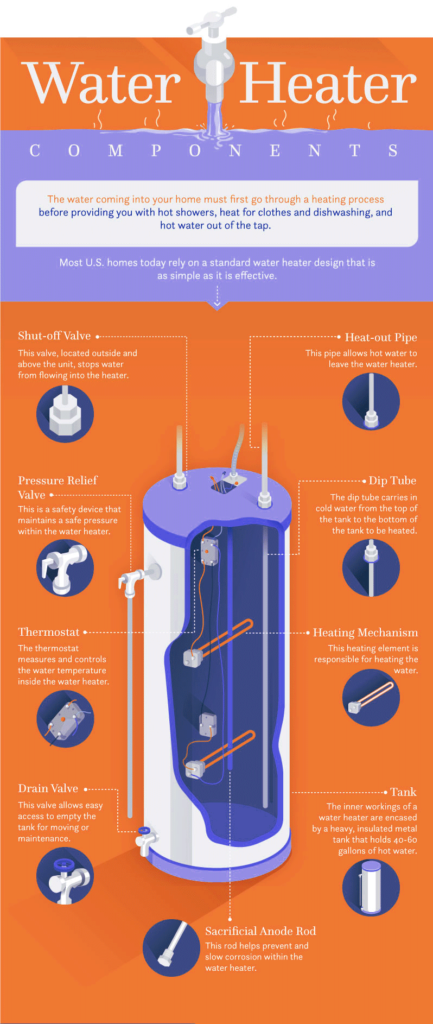
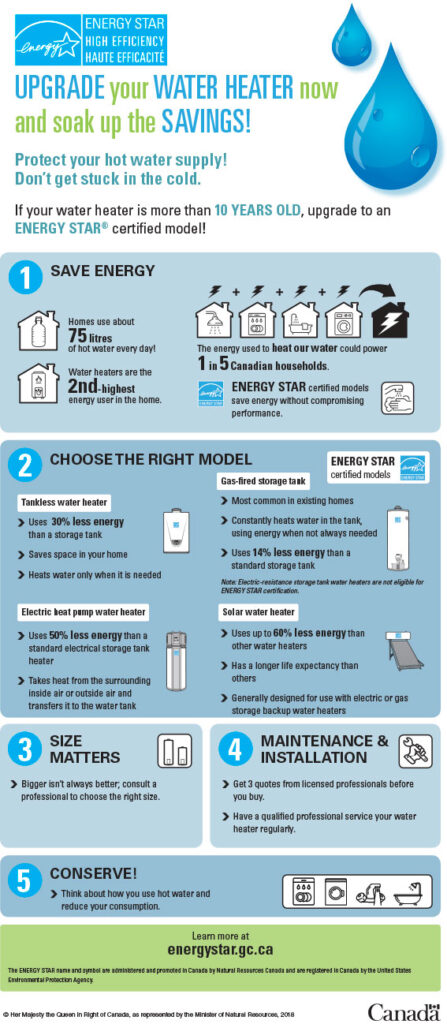
BCRC Hot Water Tank Installation in Following Cities
- Hot Water Tank Installation in Surrey
- Hot Water Tank Installation in Burnaby
- Hot Water Tank Installation in Richmond
- Hot Water Tank Installation in West Vancouver
- Hot Water Tank Installation in North Vancouver
- Hot Water Tank Installation in Abbotsford
- Hot Water Tank Installation in White Rock
- Hot Water Tank Installation in New Westminster
- Hot Water Tank Installation in Coquitlam
- Hot Water Tank Installation in Langley
- Hot Water Tank Installation in Vancouver
- Hot Water Tank Installation in Pitt Meadows
- Hot Water Tank Installation in Maple Ridge
- Hot Water Tank Installation in Port Moody
- Hot Water Tank Installation in Port Coquitlam
- Hot Water Tank Installation in Tsawwassen
- Hot Water Tank Installation in Lions Bay
- Hot Water Tank Installation in Anmore
- Hot Water Tank Installation in Delta
- Hot Water Tank Installation in Bowen Island
- Hot Water Tank Installation in Belcarra
604 781 7272
How a Hot Water Tank Works
A hot water tank, also known as a water heater, works by using energy to heat and store water, providing a ready supply of hot water for various household needs. Here’s how a traditional tank-style hot water heater works:
6. Storage: The heated water rises to the top of the tank and is stored there until needed. The tank acts as a reservoir, maintaining a ready supply of hot water.
7. Hot Water Outlet: When you turn on a hot water tap or fixture in your home, hot water is drawn from the top of the tank through a hot water outlet pipe. This hot water is then delivered to the desired location.
8. Cold Water Replacement: As hot water is drawn from the top of the tank, cold water from the main water supply enters the tank through the cold water inlet at the bottom, ensuring a continuous supply of hot water.
9. Reheating: As hot water is used and cold water enters the tank, the heating element or burner may cycle on and off to maintain the desired water temperature within the tank.
10. Energy Efficiency: Over time, heat loss from the tank walls can occur. To improve energy efficiency, some tanks have insulation to reduce heat loss and maintain water temperature.
- Cold Water Inlet: Cold water enters the hot water tank through a dedicated inlet pipe, usually located at the bottom of the tank.
- Heating Element or Burner: Inside the tank, there is a heating element (for electric water heaters) or a burner (for gas or oil water heaters). These components generate heat to raise the temperature of the water inside the tank.
- Thermostat Control: The temperature of the water is regulated by a thermostat. Once the water temperature drops below the set level, the thermostat signals the heating element or burner to activate and start heating the water.
- Heat Transfer: The heating element or burner generates heat, which is transferred to the water surrounding it. The water at the bottom of the tank heats up first.
- Convection Currents: As the water near the heating element or burner heats up, it becomes less dense and rises to the top of the tank. This creates convection currents that circulate the water within the tank.
This process repeats as long as the hot water tank is functioning and providing hot water. Traditional hot water tanks have a storage capacity, so once the stored hot water is depleted, it may take some time for the tank to reheat the incoming cold water to the desired temperature. Newer tankless water heaters, on the other hand, provide hot water on demand without the need for storage.
Hot Water Tank User Benefits
Using a hot water tank, also known as a water heater, offers several benefits that contribute to comfort, convenience, and everyday tasks. Here are some key advantages of using a hot water tank:
Readily Available Hot Water: Hot water tanks provide a continuous supply of hot water for various household needs, such as bathing, cleaning, cooking, and laundry. This ensures that you have access to hot water whenever you need it.
Convenience: With a hot water tank, you don’t have to wait for the water to heat up before using it. Hot water is readily available, making daily tasks more efficient and convenient.
Consistency: Hot water tanks provide consistent water temperatures, allowing you to enjoy a comfortable and reliable hot water supply.
Customizable Temperature: Most hot water tanks come with temperature controls that allow you to set the desired water temperature, ensuring it’s suitable for your preferences and needs.
Energy Efficiency: Modern hot water tanks are designed to be energy-efficient, helping you save on energy costs while providing reliable hot water. Insulated tanks reduce heat loss, minimizing energy consumption.
Cost-Effectiveness: Hot water tanks are generally more affordable to purchase and install compared to other types of water heating systems, such as tankless water heaters or heat pumps.
Suitable for Multiple Uses: Hot water tanks can supply hot water to multiple fixtures and appliances simultaneously, making them suitable for households with various hot water demands.
Backup Hot Water: In case of power outages or other issues, a hot water tank can provide a temporary supply of hot water, ensuring you can still meet your needs.
Lower Upfront Costs: Traditional hot water tanks have lower upfront costs compared to tankless systems or other advanced water heating technologies, making them a budget-friendly option.
Simple Maintenance: Hot water tanks are relatively easy to maintain. Regular flushing to remove sediment buildup and occasional inspections can help extend the lifespan and maintain optimal performance.
Proven Technology: Hot water tanks have been used for decades and have a long track record of providing reliable hot water. Their technology is well-understood and trusted.
Suitable for Various Spaces: Hot water tanks come in different sizes, making them suitable for various living spaces and household sizes. They can be installed in basements, utility rooms, or other designated areas.
Compatibility: Hot water tanks are compatible with various fuel sources, including electricity, natural gas, propane, and oil, allowing you to choose the one that best suits your home’s energy infrastructure.
Hot water tanks are a tried-and-true solution for providing hot water in homes and businesses. They offer convenience, reliability, and cost-effectiveness, making them a popular choice for meeting everyday hot water needs.
Hot Water Tank Components
A hot water tank, also known as a water heater, consists of several key components that work together to heat and store water for various household needs. Here are the main components of a traditional tank-style hot water tank:
Tank: The tank itself is the main storage vessel where water is heated and stored. It is typically made of steel or other corrosion-resistant materials and is insulated to minimize heat loss.
Dip Tube: The dip tube is a pipe that extends from the top of the tank to the bottom. Cold water enters the tank through the dip tube, ensuring it is delivered to the bottom of the tank for efficient heating.
Heating Element or Burner: Inside the tank, there is a heating element (for electric water heaters) or a burner (for gas or oil water heaters). These components generate heat to raise the temperature of the water inside the tank.
Thermostat: The thermostat controls the water temperature by regulating when the heating element or burner turns on and off. It ensures that the water is heated to the desired temperature.
Pressure Relief Valve: Also known as a safety valve, the pressure relief valve prevents excessive pressure buildup within the tank. If pressure inside the tank exceeds a safe level, the valve releases excess pressure to prevent tank damage.
Anode Rod: An anode rod is used to prevent corrosion of the tank. It attracts corrosive elements in the water, protecting the tank’s interior lining from deterioration.
Hot Water Outlet: This is the pipe through which heated water exits the tank and is distributed to various fixtures and appliances throughout the house.
Cold Water Inlet: Cold water enters the tank through this pipe, usually located near the bottom. The dip tube ensures that the cold water is delivered to the bottom of the tank for efficient heating.
Sediment Buildup: Over time, minerals and sediment can accumulate at the bottom of the tank. Flushing the tank periodically helps prevent sediment buildup, which can affect the heater’s efficiency.
Drain Valve: The drain valve is used to empty the tank for maintenance or repairs. It is typically located at the bottom of the tank.
Insulation: The tank is insulated to reduce heat loss and maintain water temperature. Insulation materials surround the tank to keep the water hot and minimize energy consumption.
Combustion Chamber (Gas Heaters): In gas water heaters, a combustion chamber houses the burner that heats the water. It is sealed to prevent combustion gases from escaping into the living space.
These components work together to heat and store water, ensuring a steady supply of hot water for various household activities. Regular maintenance and occasional inspection of these components help ensure the efficient and safe operation of the hot water tank.
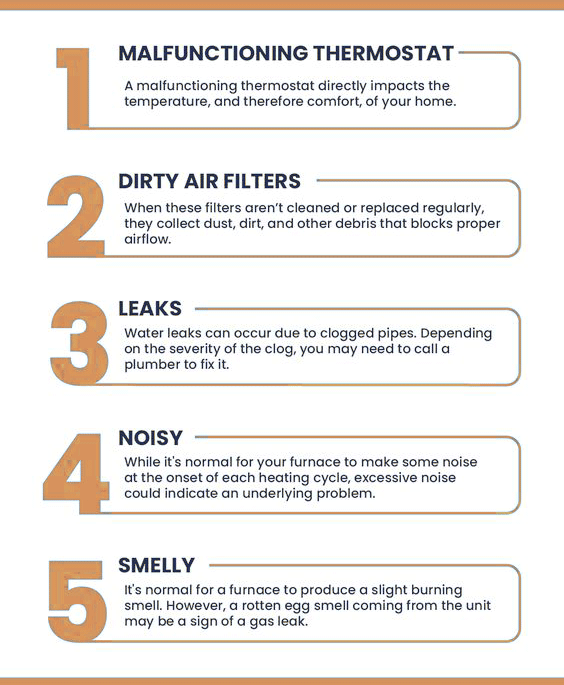
Tips How to Maintain a Hot Water Tank
Proper maintenance of your hot water tank can help ensure its efficiency, prolong its lifespan and prevent potential issues. Here are some tips to help you maintain your hot water tank. All the following services are performed by the specialized and experienced experts of BCRC company. Please keep in mind that it is never recommended that some of the following items be done by inexperienced and technically qualified people.
Temperature Check:
- Set the water heater temperature to around 120°F (49°C) to prevent scalding and reduce energy consumption.
Regular Flushing:
- Drain and flush the tank annually to remove sediment buildup that can affect efficiency and heating performance. Follow the manufacturer’s instructions.
Check for Leaks:
- Regularly inspect the area around the tank for signs of leaks, moisture, or water damage. Address leaks promptly to prevent further damage.
Pressure Relief Valve Test:
- Test the pressure relief valve by lifting the lever and allowing some water to discharge. This ensures the valve is functioning properly.
Anode Rod Inspection:
- Check the anode rod annually. Replace it if it’s heavily corroded. The anode rod helps prevent tank corrosion by attracting corrosive elements.
Insulation Check:
- Inspect the insulation around the tank. If it’s damaged or missing, consider adding an insulating jacket to reduce heat loss.
Vent Inspection (Gas Heaters):
- If you have a gas water heater, ensure the vent is clear of obstructions to allow proper exhaust ventilation.
Check Gas Connections (Gas Heaters):
- If you have a gas water heater, inspect gas connections for leaks or corrosion. Only a professional should address gas-related issues.
Monitor T&P Valve:
- Keep an eye on the temperature and pressure (T&P) relief valve. If it’s leaking, discharging water, or not functioning, have it replaced by a professional.
Insulate Hot Water Pipes:
- Insulating the pipes connected to the water heater can reduce heat loss and keep the water hotter as it travels to your fixtures.
Regular Maintenance by Professionals:
- Schedule professional maintenance every few years. A technician can perform a comprehensive inspection and address any issues.
Stay Informed:
- Keep the user manual handy for reference and follow manufacturer guidelines for maintenance. Check the manufacturer’s website for any updates or recommendations.
Upgrade to Energy-Efficient Model:
- Consider upgrading to a more energy-efficient hot water tank when the time comes. Newer models are designed to be more efficient and save on energy costs.
Drain Sediment Safely:
- When flushing the tank to remove sediment, ensure the water is drained safely, away from plants and areas where it won’t cause damage.
Educate Household Members:
- Inform everyone in your household about the location of the shut-off valve in case of emergencies, such as leaks.
By following these maintenance tips, you can help ensure that your hot water tank functions efficiently and reliably, providing a steady supply of hot water for your daily needs. If you’re unsure about performing any maintenance tasks, it’s recommended to consult a professional technician for assistance.
Hot Water Tank History
The history of hot water tanks, also known as water heaters, dates back to ancient civilizations where various methods were used to heat water for bathing and other domestic purposes. The development of modern hot water tanks began in the 19th century and has evolved significantly over time. Here’s a brief overview of the key milestones in the history of hot water tanks…

Important Points When Buying a Hot Water Tank
When buying a hot water tank, several important factors should be considered to ensure you choose the right system that meets your household’s hot water needs and energy efficiency goals. Here are the key points to keep in mind:
Tank Size and Capacity:
- Determine your household’s hot water usage to choose the appropriate tank size. A larger tank may be necessary for households with higher hot water demands.
Fuel Source:
- Hot water tanks can be powered by electricity, natural gas, propane, or oil. Choose the fuel source that is readily available and cost-effective in your area.
Energy Efficiency:
- Look for Energy Star-certified models that are designed to be more energy-efficient. These models can help you save on energy costs over the tank’s lifespan.
Recovery Rate:
- The recovery rate indicates how quickly the tank can heat a new supply of water after the existing hot water is used. A higher recovery rate is beneficial for households with high hot water demand.
Insulation Quality:
- Insulated tanks help minimize heat loss, reducing energy consumption. Look for tanks with good insulation to maintain hot water temperatures for longer periods.
Warranty:
- Consider the warranty offered by the manufacturer. Longer warranties often indicate the manufacturer’s confidence in the tank’s durability and reliability.
Anode Rod:
- Tanks equipped with a sacrificial anode rod help prevent corrosion by attracting corrosive elements. Check if the tank has a replaceable anode rod.
Installation Space:
- Measure the available space for the tank and ensure that the selected model fits comfortably in the designated location.
Venting Requirements (Gas Heaters):
- If you choose a gas water heater, make sure you understand the venting requirements and ensure proper ventilation for safe operation.
Maintenance and Service Accessibility:
- Consider how accessible the components are for maintenance and potential repairs. Easy access can simplify future upkeep.
Local Regulations:
- Check local building codes and regulations related to hot water tanks. Some areas may have specific requirements for installation and safety features.
Cost Considerations:
- Compare upfront costs, operating costs, and potential energy savings over time. Factor in installation, maintenance, and fuel costs to determine the total cost of ownership.
Professional Installation:
- Proper installation is crucial for safe and efficient operation. Hire a licensed HVAC professional to install the hot water tank according to manufacturer guidelines and local codes.
Brand Reputation:
- Research reputable brands known for producing reliable and durable hot water tanks. Reading customer reviews can provide insights into the performance of different models.
Future Needs:
- Consider your future needs, such as growing family size or potential home additions. Choosing a tank that can accommodate future demands can be beneficial.
By carefully considering these points, you can make an informed decision when purchasing a hot water tank that aligns with your household’s requirements and preferences.
Water Heater
Introducing our state-of-the-art Water Heater Services, your gateway to endless comfort and convenience. Embrace the luxury of hot water on demand, catering to your family’s needs with ease. With its cutting-edge technology and energy-efficient design, BCRC’s Water Heater promises to offer quality equipment without compromising performance. Upgrade your home with our sleek and compact Water Heaters, redefining your bathing experience and elevating your lifestyle.
Heating Services
Experience the pinnacle of warmth and comfort with BCRC expert Heating Services. Our highly skilled technicians are dedicated to delivering efficient and reliable solutions to keep your home cozy all year round. From installations to repairs, we cater to your heating serivces needs with unparalleled professionalism and expertise. Trust BCRC’s heating team to provide the perfect heating solution that will transform your living space into a haven of comfort and well-being.
Cooling Services
Stay cool and comfortable even during the hottest days with our exceptional BCRC Cooling Services. Our team of experienced technicians is committed to providing top-notch solutions for all your cooling needs. From air conditioner installations to maintenance and repairs, BCRC delivers reliable and efficient services that guarantee a refreshing indoor environment. Experience the ultimate cooling experience with our trusted and customer-focused Cooling Services.
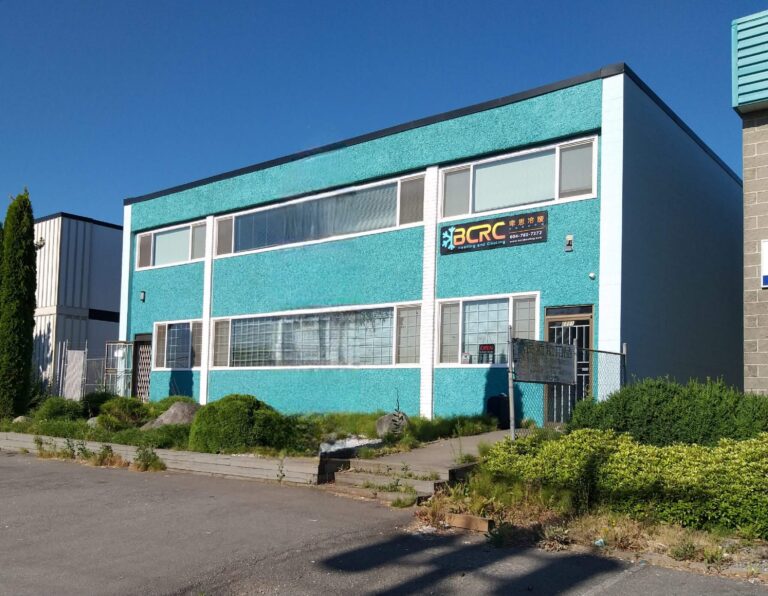
BCRC Work Steps
Approval and Scheduling
Upon receiving the customer's approval, BCRC team schedules a convenient date and time for the Water Heater or HVAC services to be performed. Milestone: The customer confirms their acceptance of the quote and service date, signifying the project's commencement.
Professional Recommendations and Detailed Quote
Based on the assessment, BCRC team provides the customer with professional recommendations and suitable Water Heater or HVAC solutions. Milestone: Within 72 hours of the assessment, a detailed and itemized quote is presented to the customer, outlining all required services and costs.
Site Visit and Assessment
If required, BCRC HVAC technician conducts a site visit to assess the customer's premises in person. Milestone: The site visit is completed, and a comprehensive assessment report is generated within 48 hours.
Initial Inquiry and Consultation
The customer reaches out to BCRC company via phone, email, or an online contact form. Milestone: Within 24 hours, a friendly customer service representative responds to the customer's inquiry and schedules a consultation.
Customer Feedback and Reviews
Customers are encouraged to provide feedback and reviews about their experience with BCRC company. Milestone: Positive customer reviews and testimonials are collected and showcased on BCRC website and marketing materials.
Ongoing Support and Maintenance
BCRC company offers ongoing support, such as maintenance plans, to help customers maintain the efficiency of their Water Heater or HVAC systems. Milestone: The customer signs up for a maintenance plan, establishing a long-term partnership with BCRC company for HVAC system care.
Customer Satisfaction and Follow-Up
BCRC team ensures open communication during and after the service process, addressing any customer concerns promptly. Milestone: A follow-up call or email is made to the customer within 48 hours after completion of the services, ensuring their satisfaction.
Service Execution and Quality Assurance
On the scheduled date, BCRC skilled HVAC technicians arrive at the customer's location to carry out the services. Milestone: The HVAC services are successfully completed, adhering to high-quality standards, and meeting the customer's requirements.
604 781 7272
BCRC Suppliers
At BCRC Heating and Cooling, we pride ourselves on partnering with the most reliable and reputable suppliers in the HVAC Services and Water Heater industry. With a shared commitment to quality, innovation, and customer satisfaction, our suppliers play a crucial role in delivering top-notch products and services to our valued customers.
From heating systems to cooling solutions and ventilation equipment, BCRC Water Heater and HVAC suppliers provide a diverse range of high-performance products to meet every need. With cutting-edge technology and sustainable practices, they ensure our customers receive the best-in-class solutions that maximize efficiency and minimize environmental impact.
Our strong and long-standing partnerships with industry-leading suppliers enable us to stay ahead of the curve and offer the latest advancements in HVAC technology to our clients. We continually assess and vet our suppliers, ensuring they meet the highest standards and align with our dedication to excellence.
With a shared vision of providing exceptional HVAC solutions, our suppliers enable us to exceed customer expectations and deliver unmatched service and support. Choose BCRC Heating and Cooling and experience the power of top-tier HVAC suppliers that drive us towards a brighter, more comfortable, and sustainable future.




